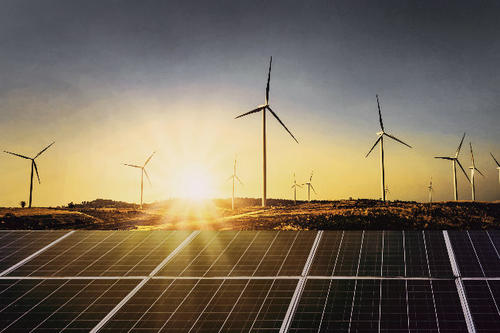
Many homes in the United States are converting to electricity-based heating and cooling systems. Converting the home heating sector to electricity, and supplying that electricity with renewable energy, has been identified as a critical national decarbonization pathway.
This has led researchers at the University of Minnesota and three other institutions to ask whether enough renewable energy can be generated locally to meet most, if not all, of that increased electricity demand.
In a report published recently in Applied Energy, researchers mapped out three scenarios: one that included battery and thermal energy storage options; an option that assumes no storage; and an option that overbuilds renewable supply by 150 percent of demand. The models were then run using data from four cities in three different climate zones: Minneapolis; New York City; Fort Collins, Colorado; and Tallahassee, Florida.
“Maximizing the penetration of renewables depends, in part, on aligning peak generation of renewable energy with peak demand for heating electricity, which doesn’t always happen,” said Anu Ramaswami, a co-author of the study and professor in the Humphrey School of Public Affairs, fellow at the Institute on the Environment and director of the Sustainable Healthy Cities Network. “For example, solar energy typically reaches peak generation during midday and wind generation is strongest at night. Neither of these align with typical peak heating energy demand times in the U.S., which are in the afternoon and evening.”
Even if enough renewable energy is theoretically being produced to meet an area’s electricity demand, it doesn’t mean that renewable penetration — or the percent of demand that is actually met using renewable energy — will be 100 percent. Along with wind and solar energy, researchers also examined the use of air source and ground source heat pumps for efficiency and cost.
The study found that:
- if air source and ground source heat pump technology is used, it is most cost effective on a per-home basis when 12-hour battery storage is used;
- for scenarios without storage, wind-based supply dominates the optimal mix for Minneapolis and New York City, while the optimal mix for Fort Collins and Tallahassee is more even between solar and wind;
- when 12-hour storage is available, the optimal supply mix in New York City becomes more even between solar and wind, skewing toward solar in Fort Collins and Tallahassee;
- when 12-hour storage is available, renewable penetration increases from 62 percent to 80 percent in New York City, 54 percent to 70 percent in Minneapolis, 54 to 83 percent in Tallahassee and 49 percent to 69 percent in Fort Collins.
However, no matter the scenario, the study found that the use of fossil fuels would still be needed to meet peak demand in cold climates like Minneapolis and Fort Collins. This is because renewable energy cannot be produced at the rate needed to meet demand during the coldest months.
Based on this study, researchers suggest that policymakers and/or low-carbon energy system planners:
- take into account the geographic and climatic differences when finding the optimal mix of wind and solar generation;
- consider incentives to invest in battery storage systems, which will increase the overall amount of demand that can be met with renewables;
- should count on a smaller, but nonetheless important, role for fossil fuel plants to meet peak demand.
“Part of the power of this study is that it was able to conduct the analysis in four very diverse cities. This wouldn’t have been possible without the structure of a collaborative research network,” said Ramasawmi.
This study was conducted by researchers with the Sustainable Healthy Cities Network, which is supported by the U.S. National Science Foundation. The study was led by Vijay Modi at Columbia University. Additional researchers included Mo Li and Anu Ramaswmai at the University of Minnesota; Shengxi Yuan and Michael Waite at Columbia University; Wendall Stainsby and Dan Zimmerle at Colorado State University; and Kewei Xu and Richard Feiock at Florida State University.
###
About the Humphrey School of Public Affairs
The Humphrey School of Public Affairs at the University of Minnesota is ranked as one of the country’s top 10 professional public policy and planning schools. The School is long noted for equipping students to play key roles in public life at the local, state, national and global levels and offers six distinctive master’s degrees, a doctoral degree, and six certificate programs. Learn more at hhh.umn.edu.
About the University of Minnesota Institute on the Environment
The Institute on the Environment supports research across the disciplines, develops the next generation of global leaders, and builds transformative partnerships – in service of solving our world's greatest challenges. IonE’s mission is to lead the way to a future in which people and planet prosper together. Learn more at environment.umn.edu.
- Categories:
- Agriculture and Environment





